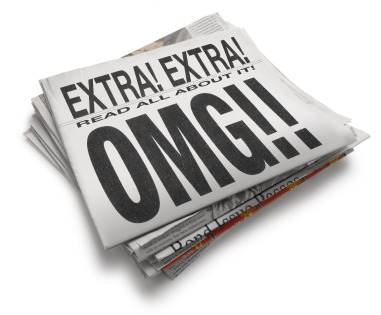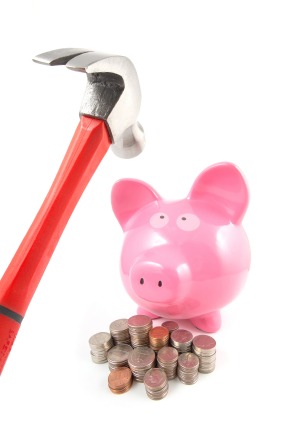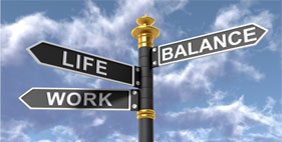What’s So Great About End of Day Trading?
With so many trading styles and strategies out there just waiting to be traded, choosing one to suit your personality and availability to trade can seem like a daunting task.

With so many trading styles and strategies out there just waiting to be traded, choosing one to suit your personality and availability to trade can seem like a daunting task.

While it's not our intention of imposing our end of day style of trading onto you, we will gladly share our reasons why we think that end of day trading trounces pretty much every other tradable timeframe out there...and you can then take it or leave it...
...Deal?
The firm's main research and development office is based in Tel Aviv Israel. It originally specialized in Forex and indices spreadbetting and CFDs but has recently expanded in stock trading also. At the time of writing, eToro has 2.2 out of 5 star on Trust pilot. The comments suggest that the platform offers some impressive features but withdrawing money can be difficult. Having said that, some of the negative reviews appear to be rants rather than constructive criticism. This can be examples of traders losing money through their own recklessness rather than eToro's fault. You should therefore take this reviews with a pinch of salt. OANDA is a global financial services company providing advanced currency solutions to both retail and corporate clients all over the world. In this article, we are going to review this broker’s trading options, tools, platforms, spreads, commissions, security measures, and educational resources to help traders make the right choice. AvaTrade offers a wide variety of trading solutions (spread trading, CFDs, and social trading), and peace of mind with its comprehensive regulation, covering the EU, Australia, Canada and South Africa. Clients can use a variety of platforms for discretionary and automated trading.![]() Best Award Winning Brokers
Best Award Winning Brokers
Time does not equal money in trading. Far from it. In the highly likely event you've entertained the prospect of becoming a fulltime trader then the good news is that you can do this but from only minutes a day - in your spare time. This is one major benefit of end of day trading.
But how on earth is this possible without spending the working day in front of the screen? From trading in an end of day trading style you can still be a "full time trader" thanks to being in the flow of opportunity from just looking at the daily chart once a day. This is the sweet spot.
 Opportunities in the market are very much like busses in London; they can all arrive at the same time as winning or losing trades, or not at all. But the trick is always to be in it and this depends on the timeframe which you trade in anticipation of a string of winning trades. So you don't have to quit your day job to do this. Why would you? Until you are able to generate consistent monthly results and have a big trading account large enough to live off, I would strongly advise you to keep it! End of day trading lets you trade alongside your day job.
Opportunities in the market are very much like busses in London; they can all arrive at the same time as winning or losing trades, or not at all. But the trick is always to be in it and this depends on the timeframe which you trade in anticipation of a string of winning trades. So you don't have to quit your day job to do this. Why would you? Until you are able to generate consistent monthly results and have a big trading account large enough to live off, I would strongly advise you to keep it! End of day trading lets you trade alongside your day job.
Putting all of your eggs in one basket is a risky business. Imagine having the double whammy of not having income from your job and losing from your trading. After all, the market will simply do "its thing" with or without you. After all, tradable opportunities in the market are random and out of those tradable opportunities, the frequency of winning trades is also random.
 Picture spurning your career in exchange for a day spent in front of a screen intra-day trading only to find out that you've had a long dry spell of no trades, or, worse still, a drawdown for the day, week or month. Not only will you no longer have the guaranteed income from your regular work, your trading account would have sustained a loss. Even though losing patches, known as drawdowns, are part and parcel of trading they certainly will not help with cash flow. End of day trading allows you to smash the time = money link, which is where people exchange their time for a set fee or wage (typically the case with your job where how much you earn is dependant on how many hours you work at a certain rate).
Picture spurning your career in exchange for a day spent in front of a screen intra-day trading only to find out that you've had a long dry spell of no trades, or, worse still, a drawdown for the day, week or month. Not only will you no longer have the guaranteed income from your regular work, your trading account would have sustained a loss. Even though losing patches, known as drawdowns, are part and parcel of trading they certainly will not help with cash flow. End of day trading allows you to smash the time = money link, which is where people exchange their time for a set fee or wage (typically the case with your job where how much you earn is dependant on how many hours you work at a certain rate).
End of day trading gives you the flexibility for you to set your trades up and walk away, safe in the knowledge your money is working overtime for you while you earn money working the day job or by focusing on other income streams. Even if you have a losing patch, the income from other streams like the day job will cushion this.
News drives the market. It always has and it always will. Some traders who dare to trade news announcements get it right some of the time but no one gets it right the whole time.
Do you have to know anything about the news in order to do trade profitably? Not really. In fact, when it comes to news trading it can and does pay to have your head deeply rooted in the sand.
It is thanks to this irony that lets us End of Day Trading, Lazy Traders profit from trading the news without knowing or even caring what the news is or what the figures are. If there is a technical trade set-up we just place the trade regardless.
 In fact, we don't even look at the news! Whether it's Ben Benanke, Non-farm payroll Friday or the Bank of England releasing its interest rates, it does not matter one jot. We just use the movement news causes in the market as a catalyst and are able to make money from it no matter what the news is or isn't. There is simply no requirement to know the news for end of day trading and those who trade it. How do you suppose this is? Traders who engage in end of day trading simply play the probabilities. With no crystal ball to hand and no psychic skill-set to speak, of we are left to rationalise that there are odds of 2:1 of the news either agreeing with my trade decision or going against it.
In fact, we don't even look at the news! Whether it's Ben Benanke, Non-farm payroll Friday or the Bank of England releasing its interest rates, it does not matter one jot. We just use the movement news causes in the market as a catalyst and are able to make money from it no matter what the news is or isn't. There is simply no requirement to know the news for end of day trading and those who trade it. How do you suppose this is? Traders who engage in end of day trading simply play the probabilities. With no crystal ball to hand and no psychic skill-set to speak, of we are left to rationalise that there are odds of 2:1 of the news either agreeing with my trade decision or going against it.
But thanks to a combination of keeping the risk low for every trade we place (no more than 1% per if my trading account) and only pursuing trades with a potential gain of 3% we have given myself no option but to able to lose small and win big.
If the news does cause our trade to go against us then the worst possible thing that could happen is for us to lose 1% of our capital. Conversely, if it does go in favour then the best possible outcome is a 3% gain on our trading account.
It's no different really different that betting on the flip of a coin knowing that if it lands on your chosen side (ie: "heads"), you gain £300 whereas if it lands on the other side ("tails") you lose £100. News just simply helps my trade arrive at its outcome faster, regardless of whether it's a win, loss or breakeven trade.
Because we are trading bigger moves on the higher timeframes such as the daily and weekly charts, which require a bigger distance between entry point and our protective stoploss, we are able to have more of a buffer to protect us from the unexpected. After all, news announcements and random intra-day spikes can happen at any time so this extra leeway enables is to stay take advantage of bigger moves over a longer period of time from simply profiting from trend trading.
 Why make trading unnecessarily stressful when you opt for it not to be?End of day trading gives us a useful escape value in enabling us to transform what is experienced by many amateur intra-day traders as a stressful, loss making folly into a carefree and relaxing hobby. We can set our trades up, put the mouse down and walk away from that screen, checking back later to see how they've done without having to even give the market a second glance in the meantime.
Why make trading unnecessarily stressful when you opt for it not to be?End of day trading gives us a useful escape value in enabling us to transform what is experienced by many amateur intra-day traders as a stressful, loss making folly into a carefree and relaxing hobby. We can set our trades up, put the mouse down and walk away from that screen, checking back later to see how they've done without having to even give the market a second glance in the meantime.
Intra-day traders don't have this luxury. After all, trading on the smaller timeframes is often an experienced by a rookie as being one of the most stressful chapters in their trading career before they either give up or move to a higher timeframe to trade, like I did.
Every flicker of movement on the chart represents an emotion in the markets while every emotion is perpetuated by greed and fear and the smaller the timeframe traded, the more stressful it's likely going to be with the with the extra volatility and irrational behaviour that comes with it... Not to mention the longer time required to keep in the flow of opportunity!
When there is money is at stake in a live trade, the amateur will often have a strong emotional attachment to the outcome of the trade; a feeling of euphoria and invincibility if the trade is in profit or a feeling of disdainful rejection from "getting it wrong" if the market goes the other way. Sound familiar? If it does then it's one of the tell-tale signs that you're thinking like an amateur trader.
Trading the hourly timeframe is therefore infinitely less stressful than trading the one minute chart which trading the weekly is going to be less stressful than trading the daily chart. The higher the timeframe, the less maintenance is required from analysing it through to placing and managing the trades.
 If you are trading end of day - profitably - you can also achieve a much better return for the reduced time spent trading. This is particularly the case with end of day trading compared to the hours spent trading by intra-day traders. Even if you are enduring drawdown, the percentage loss will bar far lower for the time spent losing money than that of an intra-day trader who may also be doing the same. Let's take Jack and Jill for example, who both achieve a 5% return on their capital from trading by the end of the month. The key difference is that John trades intra-day for three hours every morning, Monday to Friday while Jill trades end of day for an average of fifteen minutes for every weekday evening. Typically with 22 trading days in the month, this means that Jack spent 66 hours achieving his 5% gain while Jill only spent five and a half hours to get the same result!
If you are trading end of day - profitably - you can also achieve a much better return for the reduced time spent trading. This is particularly the case with end of day trading compared to the hours spent trading by intra-day traders. Even if you are enduring drawdown, the percentage loss will bar far lower for the time spent losing money than that of an intra-day trader who may also be doing the same. Let's take Jack and Jill for example, who both achieve a 5% return on their capital from trading by the end of the month. The key difference is that John trades intra-day for three hours every morning, Monday to Friday while Jill trades end of day for an average of fifteen minutes for every weekday evening. Typically with 22 trading days in the month, this means that Jack spent 66 hours achieving his 5% gain while Jill only spent five and a half hours to get the same result!
So here's the question: is it really worthwhile for someone like Jack to spend all this time in pursuit of this a potential gain which is not necessarily guaranteed when he could have taken a far easier route? Perhaps not... unless he had a trading account size of $100,000 perhaps, enabling him a monetary gain of $5,000.
 The higher the timeframe, the more predictable and stable markets tend to be. This is great for us technical Lazy Traders because we trade with probabilities in our favour and the more obvious the pattern or trend is on the chart, the more self-fulfilling the outcome generally is. On the higher order timeframes like the daily and weeklies, we are also far less susceptible to the adverse volatility caused by news releases, noise, and rumours circulating the market. We have the longer term position traders on side. These are the so-called "big dogs" - the banks, institutions, and hedge funds - who have far more influence in determining a direction in the market and blazing a trail for us to hop onto.
The higher the timeframe, the more predictable and stable markets tend to be. This is great for us technical Lazy Traders because we trade with probabilities in our favour and the more obvious the pattern or trend is on the chart, the more self-fulfilling the outcome generally is. On the higher order timeframes like the daily and weeklies, we are also far less susceptible to the adverse volatility caused by news releases, noise, and rumours circulating the market. We have the longer term position traders on side. These are the so-called "big dogs" - the banks, institutions, and hedge funds - who have far more influence in determining a direction in the market and blazing a trail for us to hop onto.
They represent the force behind big market movements whereas we private investors are the participants who take advantage of such moves by hopping onto the back of them without actually creating them ourselves.
Trading a more stable timeframe also means we can stay in the game for longer without being chopped about like a lost man at sea. All we need to do is go with the flow (ie: trading with the trend)...but only if we have a technical set-up where our rules for entry have been fulfilled!
"It's not about being wrong, rather, it's about how much money you make when you're right and how much you don't lose when you're wrong" GEORGE SOROS
 Even though the frequency of tradable opportunities on the daily chart may be less than that of a smaller timeframe, this silver lining is that we are able to profit from bigger swings in the market from the ones we do take. We can essentially make more from trading less. What would you rather have: more trades with less reward or less trades with higher reward potential? I know which I would choose. The lazy, end of day trading option of trading less, of course! We may decide to only trade set-ups with a reward/risk potential of 3:1; which means for every 1% of our trading account risked on a trade set-up which follows our rules, we want the set-up to have the potential gain of at least 3%.
Even though the frequency of tradable opportunities on the daily chart may be less than that of a smaller timeframe, this silver lining is that we are able to profit from bigger swings in the market from the ones we do take. We can essentially make more from trading less. What would you rather have: more trades with less reward or less trades with higher reward potential? I know which I would choose. The lazy, end of day trading option of trading less, of course! We may decide to only trade set-ups with a reward/risk potential of 3:1; which means for every 1% of our trading account risked on a trade set-up which follows our rules, we want the set-up to have the potential gain of at least 3%.
I've traded some of the most obvious looking set-ups on the daily timeframe, with a reward potential of as much as 15:1...and they have hit target, gaining as much as 15% in profit on my trading account on a trade which took five minutes to spot and about ten minutes to manage over the course of two weeks.
All you need is one or two of these set-ups a year and we will be doing fantastically well.
 I have a confession to make: If trading did not offer me the option to make maximum return for minimal effort, then I honestly would not have bothered with it. Why should I? Who, apart from intra-day traders and those with an intellectual fascination with the markets actually wants to spend all day watching bars on charts moving up and down when you can potentially do as well from setting your trades up and walking away to do the things that really interest you?
I have a confession to make: If trading did not offer me the option to make maximum return for minimal effort, then I honestly would not have bothered with it. Why should I? Who, apart from intra-day traders and those with an intellectual fascination with the markets actually wants to spend all day watching bars on charts moving up and down when you can potentially do as well from setting your trades up and walking away to do the things that really interest you?
Fortunately both you and I, it does. End of day trading does give us this option - one, many newcomers eventually take after nursing their battle scars given to them by the market when trying their hand at being an intra-day trader.
It is the only style of trading which enables us to both fully be in control of our trading decisions while also letting us reap the full benefits of being able to fit trading into our existing lifestyle without having to move mountains to fit our life into trading. There is a big difference between the two!
For me, it means I can do whatever the heck I want in the day, safe in the knowledge that my trading business is at work, with my capital working overtime. If I want to go out in the evening then I still can! I can either go out after my trading is done or do it first thing the next morning before the European open.
We end of day trading "lifestyle traders" have the flexibility to do what we want, when we want it and with who we want. What is more, we are fund traders who work for only 10 minutes a day! How you use end of day trading to engineer your life is up to you. I'll leave that part to your imagination!
Trading just happens to be something that I do. Not doing so would be too big a sacrifice in missing out on the fabulous reward potential that the market routinely gives us. I treat trading as a business - one with low overheads, low maintenance and for the most part, looks after itself.
Yes, I have other business interests outside of trading too. It spreads the risk and, frankly, I recognise the commercial benefits of being in other industries too. It's no coincidence though that I am also able to run these other businesses on autopilot from anywhere in the world.

